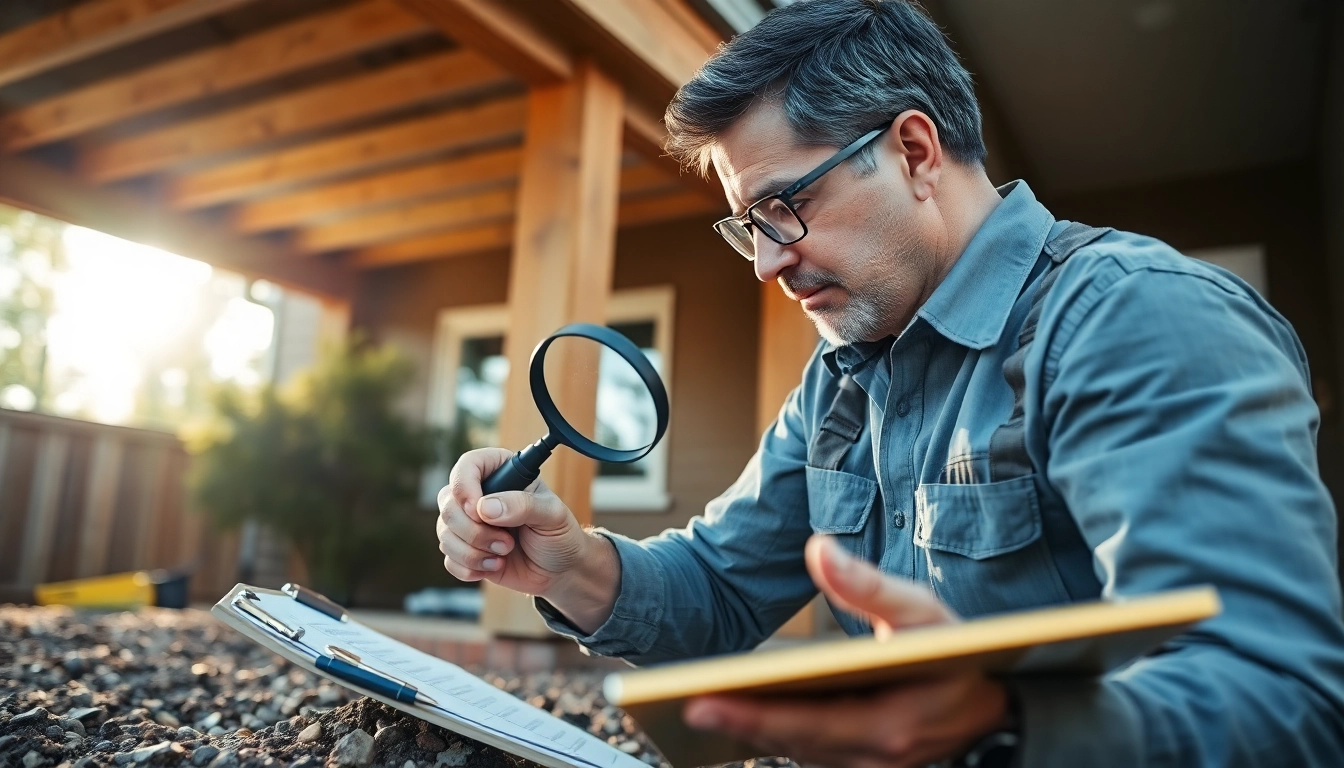What Are Termite Inspections and Why Are They Essential?
Defining Termite Inspections
Termite inspections involve a meticulous examination of your property by a licensed pest control professional to identify any signs of termite activity or infestations. These inspections are critical for maintaining the integrity of wooden structures in homes and businesses. During the inspection, professionals look for both visible and hidden damages caused by termites, while assessing potential access points where termites could enter your home. For detailed guidance on termite inspections, understanding these processes can help homeowners mitigate risks effectively.
The Cost-Effectiveness of Regular Inspections
Regular termite inspections can save property owners significant expenses in the long run. The average cost of a termite inspection ranges between $75 and $325, depending on factors such as the size of the property and geographical location. In contrast, untreated termite infestations can lead to repair costs that range from thousands to tens of thousands of dollars, not to mention the potential decrease in property value. Furthermore, timely inspections help in identifying problems before they escalate, allowing homeowners to take preventive action before extensive damage occurs.
Common Misconceptions About Termite Inspections
One common misconception is that homeowners can perform a sufficient inspection on their own. While homeowners can look for superficial signs of termite damage like mud tubes or frass (termite droppings), professionals employ specialized techniques and tools that provide a comprehensive overview of the property. Another misconception is that inspections are only necessary when signs of infestation are already visible. However, many regions consider routine inspections as preventive measure, as termites can remain hidden for years before making their presence known.
Signs Your Home Needs a Termite Inspection
Visible Damage Indicators
Visible signs of termite infestation include hollow-sounding lumber, termite droppings, and wooden structures that appear to have been damaged. Homeowners should also look for buckling or warped wood, which can indicate the presence of termites. Spotting these signs early can allow for targeted pest control, saving time and money in the process.
Unusual Noises and Other Red Flags
Termites often produce a distinctive clicking sound, mainly when they chew wood or communicate with each other. Homeowners may also notice unexplained sagging in floors or ceilings, which can signal structural damage from termites. Other red flags include discarded wings near windows and doors, as termites swarm when forming new colonies.
Environmental Factors That Increase Risk
Certain environmental factors can contribute to an increased risk of termite infestation. Properties located near wooded areas or with high soil moisture content are particularly vulnerable. Additionally, homes with wood that is in direct contact with the ground, or those with unsealed entry points, are at greater risk of being targeted by subterranean termites.
What to Expect During Termite Inspections
The Inspection Process: Step-by-Step Overview
A typical termite inspection takes approximately 45 minutes to an hour and includes thorough checks of both the interior and exterior of the property. The inspector will examine areas such as the foundation, roof, and any crawl spaces. They may also assess landscaping for potential barriers termites could breach, making special note of any wood piles or moisture-rich areas adjacent to the house.
Tools Used by Professional Inspectors
Professionals are equipped with specialized tools to aid in their inspections. These may include moisture meters, infrared cameras, and drilling equipment for deeper examinations. The use of these tools allows inspectors to detect even the slightest signs of termite activity, often before they become apparent to the untrained eye.
Duration and Cost of Inspections Explained
The average duration of a termite inspection generally falls within a 30 to 90-minute timeframe. While inspecting, costs can fluctuate based on several elements, including geographical factors and the size of the property. As mentioned earlier, the expected price ranges from $75 to $325, making it an affordable intervention compared to the cost of potential repairs resulting from unchecked infestations.
Preparing for Your Termite Inspections
Homeowner Checklists: Before the Inspector Arrives
Preparation for a termite inspection can facilitate a more efficient process. Homeowners should compile a list of any past pest problems within the property and make note of any visible signs of damage. Additionally, it’s advisable to be available during the inspection to discuss findings and ask any pertinent questions.
Clearing Access Points for a Thorough Inspection
To ensure that inspectors can carry out their tasks effectively, clearing out areas around the property is wise. This involves moving furniture away from walls, relocating items stored in attics or basements, and removing any landscaping features that could obstruct access. By providing easy entry points, homeowners can help inspectors thoroughly evaluate all potential risk areas.
Questions to Ask Your Inspector
Homeowners should feel empowered to ask their inspectors about their process, any specific findings during the inspection, and their recommendations for treatment and prevention. Questions could include inquiries about the most vulnerable parts of the home, any previous infestations, and whether they suggest preventative treatments moving forward.
Post-Inspection Actions: What Comes Next?
Understanding the Findings Report
After the inspection, homeowners receive a comprehensive report detailing the inspector’s findings, including any signs of termite activity and structural damages. The report may also provide recommendations for immediate actions and preventive strategies moving forward. Understanding these findings is crucial for making informed decisions regarding your property.
Next Steps: Treatment Options and Preventative Measures
Based on the findings of the inspection, homeowners may have several treatment options available to them. Common strategies may include bait systems, liquid pesticides, or a combination of both. Additionally, preventative measures such as soil treatments and proper landscaping techniques can help minimize the risk of future infestations.
When to Schedule Follow-Up Inspections
Once a termite treatment has been conducted, it’s essential to schedule follow-up inspections. These should be scheduled at least annually, or more frequently if you live in an area where termites are prevalent. Regular inspections allow homeowners to ensure that preventive measures remain effective and that the property remains protected from future infestations.
